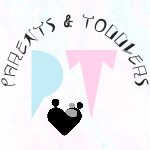Welcoming a newborn into your family is an experience filled with unrivaled joy and love. However, deciphering a new baby’s wants and indications can be difficult, especially for first-time parents. Understanding a newborn’s hunger cues is one of the most important components of caring for them. Feeding a hungry baby as soon as possible is critical for their growth, development, and overall well-being. This permissive parenting blog will look at the indications of a hungry newborn, parenting tips for newborns parents in deciphering these cues and responding appropriately to their baby’s demands.
The Rooting Reflex
The rooting reflex is one of the first hunger indicators that babies experience. When you massage your baby’s cheek or lips, they will turn their head and open their mouth to seek sustenance. This is a common response in the first month of life and indicates that your baby is ready to eat.
Lip Smacking and Sucking
Newborns often exhibit lip smacking or sucking motions, which are unmistakable signs of hunger. They may bring their hands or fingers to their mouth and start sucking, providing an early indication that they are feeling hungry. This action mimics the sucking motion during breastfeeding or bottle feeding.
Increased Alertness
A hungry newborn tends to be more alert and active. If your baby was previously asleep or in a calm state and suddenly becomes more awake and aware, it could be because they’re hungry. This increased alertness is their way of communicating their need for nourishment.
Fussiness and Crying
Fussiness and crying are common signs of hunger in newborns. If your baby is unsettled, fussy, or crying persistently, especially after a period of sleep, they may be hungry and seeking comfort through feeding. Responding promptly to their cues can help soothe them and meet their nutritional needs.
Hand-to-Mouth Movements
Newborns often bring their hands or fists to their mouth when they are hungry. This action may be accompanied by lip smacking or sucking, reinforcing their hunger cues. Pay attention to these self-soothing gestures, as they are an early indication that your baby is ready for a feeding session.
Turning Toward the Breast or Bottle
During feeding time, a hungry newborn will instinctively turn their head toward the breast or bottle when it’s brought close to them. This response showcases their readiness to feed and their desire to latch on for nourishment.
Restlessness and Squirming
Restlessness and squirming are signs that your baby might be hungry and uncomfortable. They may move their body, wiggle, or shift positions in an attempt to communicate their hunger. Responding to these cues by offering a feeding can provide comfort and satiate their appetite.
Sucking on Anything Nearby
When a newborn is hungry, they may try to suck on anything within their reach, whether it’s their own hand, fingers, or even a pacifier. This action helps them self-soothe and prepares them for breastfeeding or bottle feeding.
Rapid Eye Movements (REM)
During REM sleep, newborns often display signs of hunger, such as fluttering eyelids and rapid eye movements. If you notice these movements, consider offering a feeding as your baby might be approaching a wakeful state and need nourishment.
Conclusion
Understanding the signals of a hungry infant is critical for giving timely and adequate care. Being alert and receptive to your baby’s cues will help you create a strong bond and ensure their nutritional needs are satisfied. Trust your instincts as you embark on this wonderful adventure of motherhood, and embrace the rare moments of breastfeeding and nourishing your growing kid.





